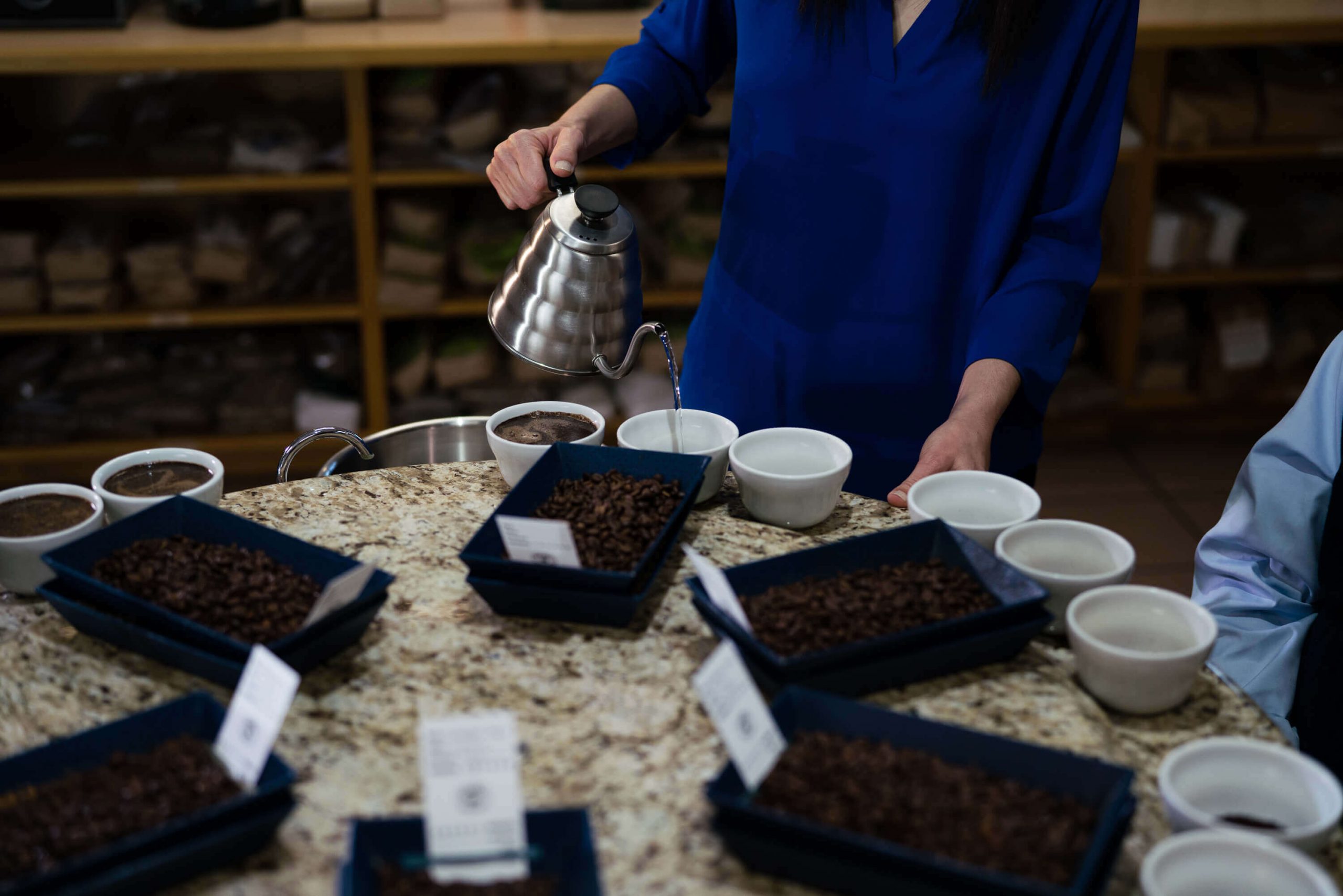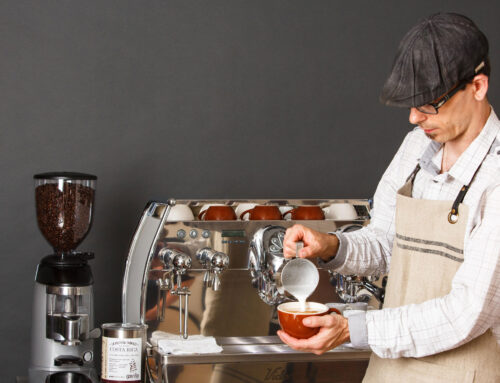Do you know where your coffee beans come from? The beans you use to make your cup of coffee are actually processed and roasted seeds from a fruit known as the coffee cherry. As an agricultural product, the flavor of your coffee beans can vary depending on the species and varietal of the plant as well as terroir, which refers to the land’s soil, climate, and elevation. That’s why each coffee-growing country, and even regions within each country, have their own signature flavor profile.
Understanding the origin of your beans is a major part of properly brewing coffee that your customers enjoy and that you are proud to serve. A good place to start is knowing the difference between single origins and blends. Let’s explore the main differences between these two options and how to choose the best coffees for your business and customers.
What is Single Origin Coffee?
“Single origin coffee is about celebrating the nuances and uniqueness of each origin,” says fourth-generation Gaviña, Lisette Gaviña Lopez. “It’s about being true to the origin and what they’re known for.”
Single origin coffees are created from beans that are grown and harvested from a single, specific country or region. It is 100% a product of the producing country. Since there are no other flavors added in, you are able to taste the signature flavor of the coffee’s originating country, which is what makes single origin coffees so unique.
For example, a Colombian single origin coffee carries distinct fruity, floral aromas and has a well-rounded body with high acidity, all of which is largely due to Colombia’s high elevation, native soil, and climate. On the other side of the flavor spectrum, Indonesia’s lower elevations and overall terroir product, Sumatra single origin coffee, is known for being earthier with a heavier body and lower acidity.
What are Blends?
“The beauty of a blend is that it gives the consumer access to some of the finer, more expensive coffees without having to pay a higher price,” says Lisette Gaviña Lopez.
Blends are produced from a combination of beans originating from more than one place. Unlike a single origin coffee – which delivers the unique flavor of its origin with no alterations – blends are created by roasters who hand-select specific coffee beans to achieve a specific taste profile, such as Latin-style espresso or French Roast. Oftentimes, your roaster will create blends to deliver coffee with a consistent taste profile year after year and better meet their customers’ flavor preferences and needs.
What makes blends so special is that it allows for flexibility. With blends, you are able to enjoy the same flavor you grow to love year after year at a much lower price point compared to a single origin coffee.
How Do You Choose the Best Coffees for Your Business?
When it comes to choosing between a single origin or a blend, it all comes down to preference and knowing what your customers want out of your drink. There are a few different factors that are helpful when determining which you would like to serve.
1. Consider the flavor profile you’re looking for.
As mentioned before, a single origin coffee carries the dominant flavor of its country of origin since the coffee beans are all sourced from the same location. However, this also means you may be lacking some of the delicious flavor combinations you might get from a quality blend. Depending on the country of origin, a single origin’s distinct flavor might even be a bit overwhelming for inexperienced coffee drinkers, so the more characteristic, well-rounded taste of blends may be preferable for your customers.
2. Think about taste consistency.
Since coffee is an agricultural product, there may be slight variations in taste between each year’s harvest with a single origin coffee. Most of the time, these inconsistencies are corrected through quality control, but it is good to be mindful of these differences when serving your coffee. Blends, on the other hand, don’t present much of an issue when it comes to taste consistency, given its nature as a blend of beans.
3. Evaluate your budget.
Single origin coffees are naturally more expensive than blends due to seasonal availability and variance in the growing season. As a result, if you are looking for a more affordable option, blends might be the right fit for you. For example, single origin Kona coffees are known for having a higher price point. So, as an alternative, you may want to go with a Kona blend instead, which delivers the quality of a single origin Kona but at a much lower price.
How Gaviña Coffee Solutions Can Help
Gaviña Coffee Solutions has you and your business covered when it comes to coffee. We provide both single origin and blended coffee bean varieties produced from small farms throughout some of the best coffee-growing regions in the Coffee Belt. Our coffee is made from high-quality Arabica beans, ensuring a deliciously smooth flavor in every cup. No matter what your business needs are, your customers will be able to taste the difference when you brew a cup of Gaviña Coffee.





![Preparing Your Foodservice Coffee Menu For The Fall Season [Complete Checklist]](https://www.gavinacoffeesolutions.com/wp-content/uploads/1-1-500x383.jpg)

